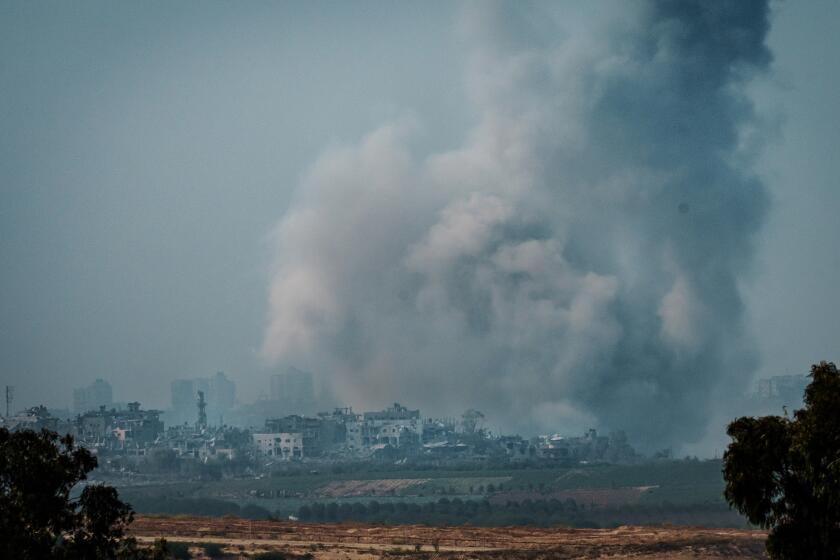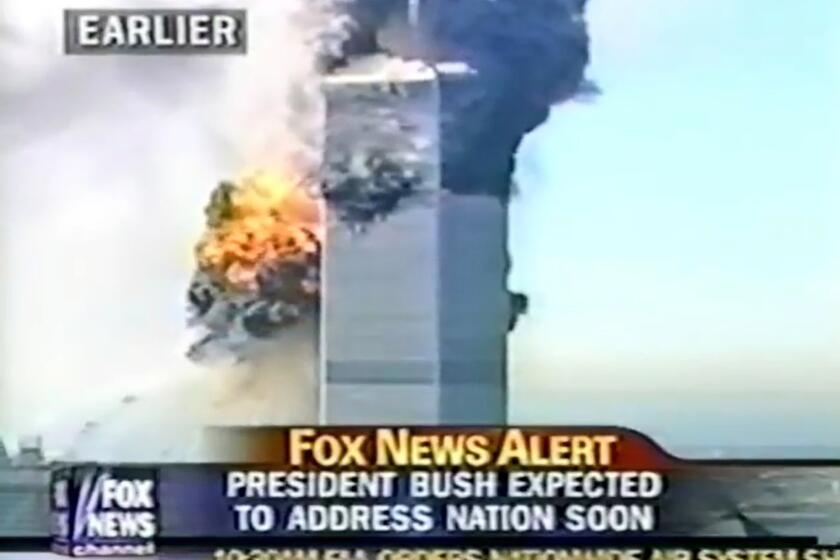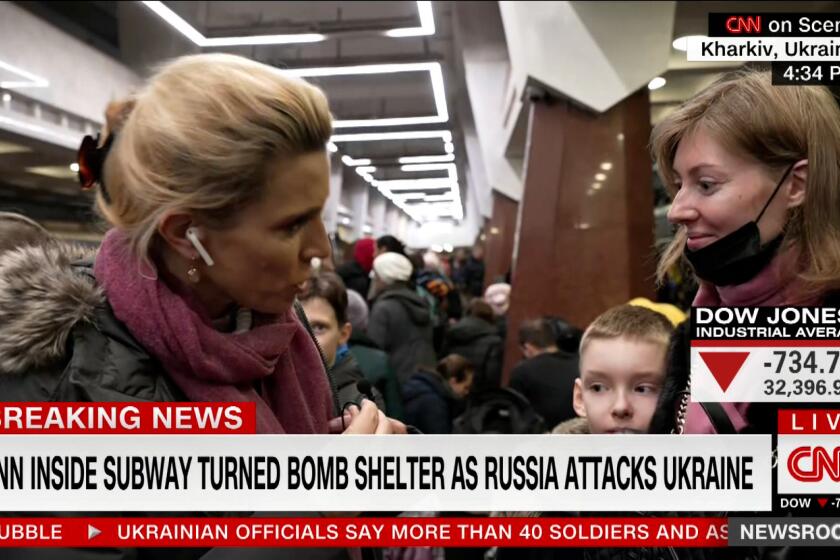Horrific images from Israel-Hamas war pose challenges for TV news
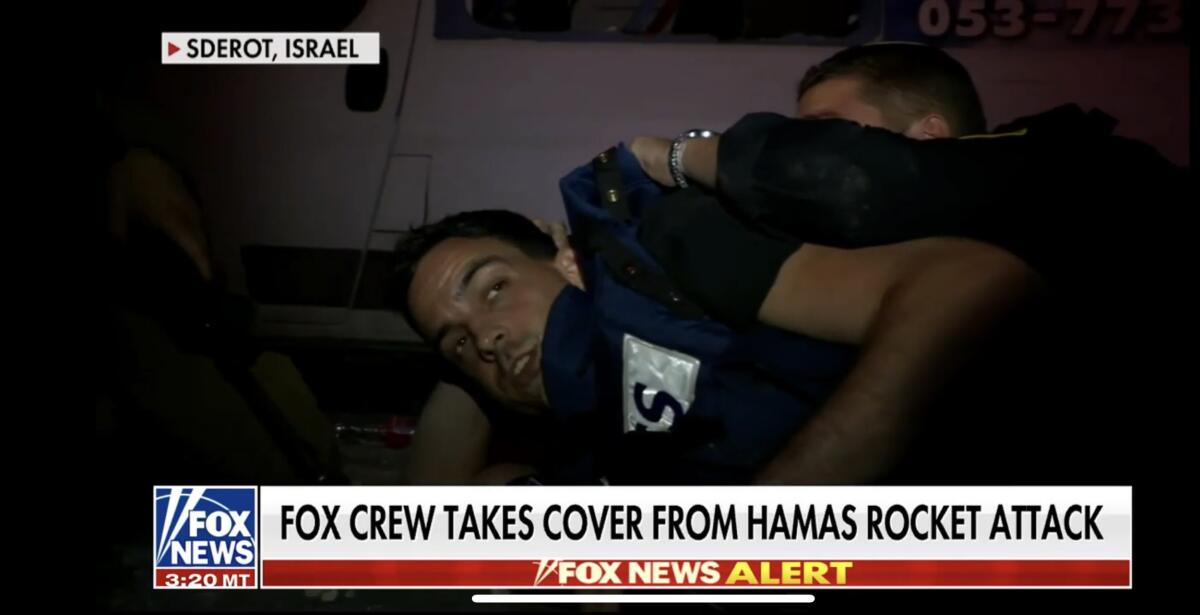
- Share via
Once again, TV news is saturated with images of an international conflict only a year after Russia’s invasion of Ukraine. But veterans of such stories have rarely seen anything like the brutal weekend attack on Israel by Hamas, the radical Palestinian militant group that rules the Gaza Strip.
Viewers have become accustomed to live shots of bombs and rising smoke from air strikes since CNN reported from Baghdad during the first Gulf War in 1991, widely considered the first war televised in real time. However, the horror that has unfolded onscreen over the last several days from the Middle East is presenting a level of intensity not witnessed since the terror attacks on Sept. 11, 2001.
Facing industrywide cost-cutting and a politically polarized audience, TV news will be navigating the story for months, struggling with how to present the heinous casualties, confront misinformation on social media and deal with accusations of bias toward either side in the escalating war.
The Israeli military said in a statement on Saturday night that it was preparing a coordinated offensive in Gaza using air, ground and naval forces.
All three of the U.S. broadcast network evening news anchors — Lester Holt of NBC, David Muir of ABC and Norah O’Donnell of CBS — traveled to the Israeli city of Tel Aviv for their programs, a move still seen as a barometer for the severity of a breaking story. Cable hosts such as CNN’s Anderson Cooper and NewsNation’s Chris Cuomo are broadcasting their programs from the region as well. While political talk and opinion programming has ruled cable news during prime time in recent years, those discussions have been squeezed to the side of the screen as correspondents deliver grim live reports around the clock.
Reporting on the violence by Hamas and response by Israel — which have resulted in a mounting death toll of more than 1,200 Israelis and 1,100 Palestinians so far — is requiring onscreen warnings before showing pictures of how Hamas’ onslaught killed families and children in their homes, leaving behind blood-soaked floors, beds and cribs. Israel has responded to Hamas by sending warplanes to hammer the tiny Gaza Strip territory.
20 years ago, the news ticker became part of the TV viewing experience.
Seasoned correspondents in the region, who are used to being in the middle of firefights or the aftermath of suicide bombings, are being tested on their ability to remain steady as they report on the massacre with descriptions of violence.
“This story to me is something I’ve prepared to cover for years and had hoped that I never had to,” Fox News correspondent Trey Yingst said Tuesday in an interview from Tel Aviv. “I could never imagine this happening at that scale. To have this level of coordination [of Hamas’ attack] was unprecedented.”
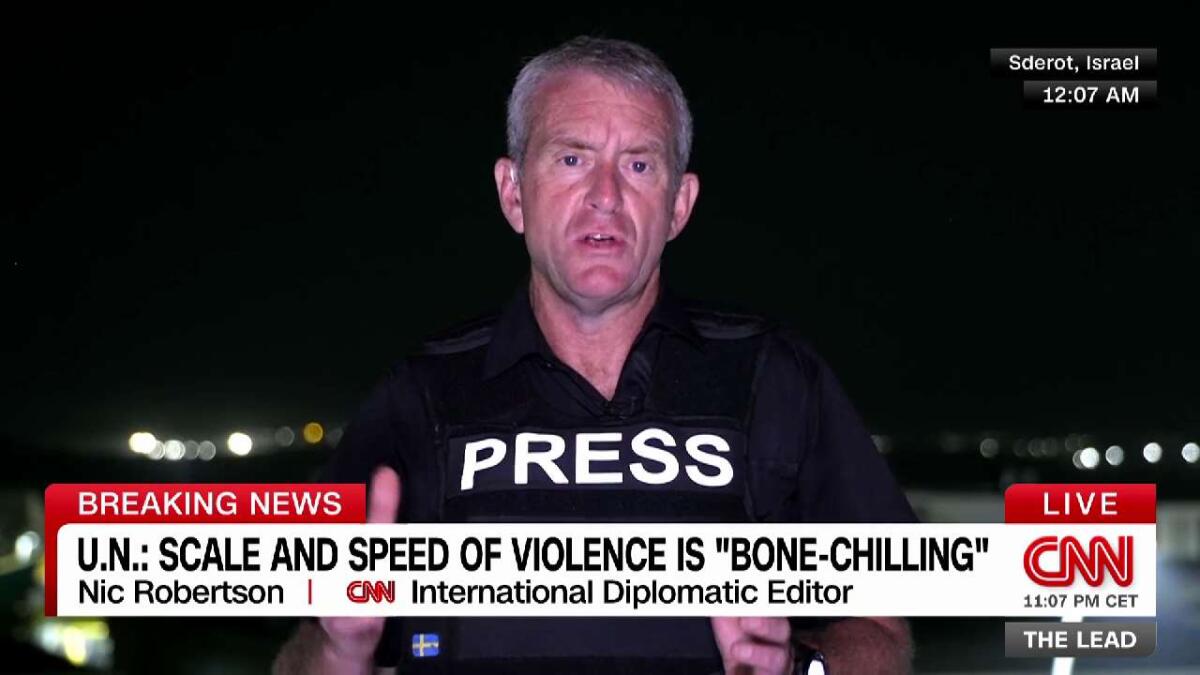
Correspondents and producers have had to spend more time deliberating over which graphic images of the atrocities can be shown. While news organizations want to convey the horrors, they also want to preserve the dignity of the victims and their families.
“It’s really challenging,” said Imtiaz Tyab, an international correspondent for CBS News reporting from Israel. “On the one hand, you want to show your viewers back home in the U.S. the unvarnished truth. But the reality is that the images are so gruesome that we’ve had to be very careful with how we present them.”
Yingst said there is not always time to decide what to put on the air. On Monday, he was delivering a live report from Sderot, an Israeli city near the Gaza border, when a recovery team began pulling bodies out of a building behind him. He interrupted a TV host back in New York to note that the body of an Israeli police officer was recovered. He later asked for silence while the covered body was carried off.
“I had to make some decisions live on TV,” Yingst said. “I want to be respectful of the dead and respectful of the families but also be sure that I’m showing the world what is taking place. What happened here was a massacre of unimaginable proportions.”
With fewer pictures to tell the story, correspondents often have little choice but to recount the details in their own words.
For the first time in decades, foreign correspondents find themselves covering a European conflict.
Nic Robertson, who has covered numerous war zones for CNN during his 33 years at the network, looked away from the camera and choked up Monday night as he detailed what he saw in a rocket shelter near the Tribe of Nova music festival that Hamas attacked.
“The smell when you step into the shelter is kind of what hits you first and you realize that this stuff on the floor is what you fear it is — it’s blood, and you realize in an instant looking at the shell casings on the floor, looking at the bullet holes in in the concrete in front of you, and you can understand what happened,” Robertson told anchor Jake Tapper.
In a Tuesday interview, Robertson told The Times he felt compelled to give the audience as vivid a description as possible of the horrific scene.
“It was important to bear witness in a way that the audience can see the same color that I was seeing,” he said. “I wasn’t going to diminish this and make it black-and-white. It did impact me because inside the rocket shelter, it was so clear what had happened.”
Networks tend to rely for war zone coverage on veteran correspondents who understand the situations they are reporting on. But years of covering warfare can take its emotional toll. Media companies provide mental health resources to correspondents who need to talk to a therapist. Fox News has a portal where its employees can sign on and get counseling from wherever they are in the world.
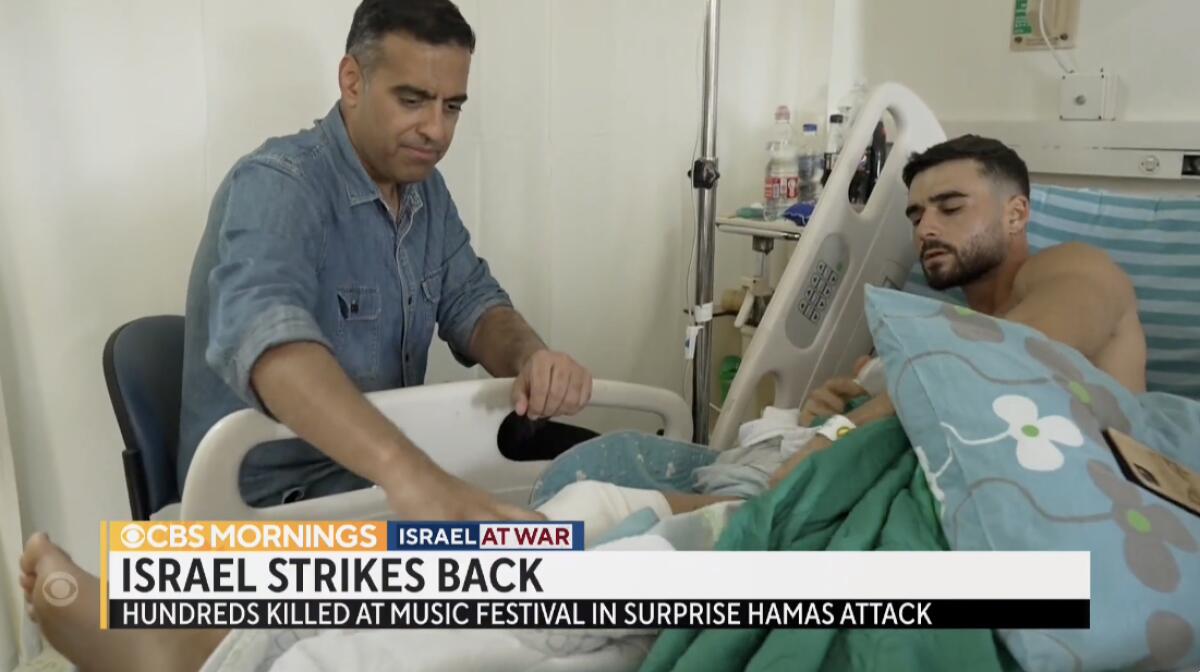
Tyab said the shared experiences of journalists in war zones enables them to turn to each other for solace. “Correspondents and those who do international reporting — we are a community,” he said. “They rely on each other. We confide in each other. We are in it together.”
For CNN, where new chief executive Mark Thompson took over this week, the conflict is a major test after the network underwent significant cost-cutting since becoming part of Warner Bros. Discovery last year. Hundreds of jobs were slashed in the news organization, which has more than 4,000 employees. But those moves do not appear to have hobbled its coverage. The network has more correspondents in the region than any other U.S. TV operation.
“I would say resources are tighter than they were before,” said Robertson when asked about the impact of the personnel cuts. “But look at how many people we have here right now and look at the level of deployment when it comes to big stories. We’re always ready and the budget is always there.”
While CNN has a history of viewers tuning in during international crisis, Fox News has been drawing the largest audiences so far for Israel coverage, according to Nielsen data. MSNBC is running second, slightly ahead of CNN.
More to Read
Inside the business of entertainment
The Wide Shot brings you news, analysis and insights on everything from streaming wars to production — and what it all means for the future.
You may occasionally receive promotional content from the Los Angeles Times.
